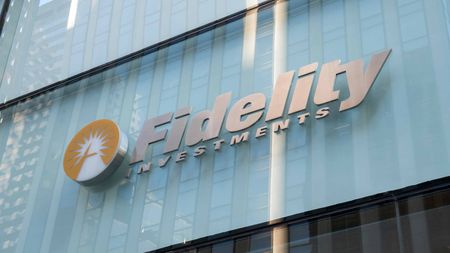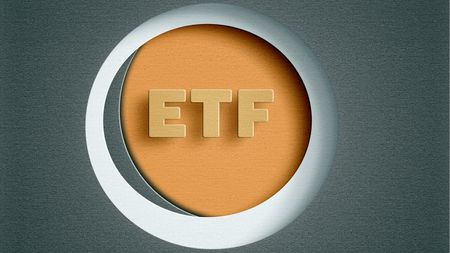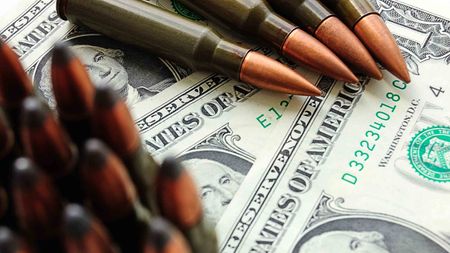2011 Mutual Fund Rankings
We list which funds have performed best and which are worth owning now.
Editor's Note: This story has been updated since its original publication in the September 2011 issue of Kiplinger's Personal Finance magazine.
We present here the top performers over the past one, three, five, ten and 20 years in 11 fund categories -- ten stock-fund groups and one group for alternative investments -- along with our suggestions about which funds you should consider buying.
The lists include only funds that require modest amounts to get started and that are available to all classes of customers. (Note: The data in the accompanying tables are updated on a monthly basis.)

Sign up for Kiplinger’s Free E-Newsletters
Profit and prosper with the best of expert advice on investing, taxes, retirement, personal finance and more - straight to your e-mail.
Profit and prosper with the best of expert advice - straight to your e-mail.
LARGE-COMPANY STOCK FUNDS
Growth funds dominate the list of one-year leaders.
With the economy expanding at a snail’s pace, it’s not surprising that funds specializing in fast-growing companies dominate the short-term winners list. Over longer periods, a few value-conscious managers, such as Donald Yacktman, stand out. With his son Stephen, Yacktman runs two eponymous top performers [Yacktman Fund (YACKX); Yacktman Focused (YAFFX)]. Many top funds, including Yacktman’s, hold relatively few stocks or make big sector bets. Of course, a focused strategy can backfire, as it has in 2011 for Fairholme Fund (FAIRX), which is heavily invested in financial stocks. Fidelity Contrafund (FCNTX), a growth-oriented fund run deftly by Will Danoff since 1990, is a member of the Kiplinger 25. Amana Growth (AMAGX) and Amana Income (AMANX) adhere to Islamic principles and so don’t invest in companies that lend money. That helped big-time during the financial crisis.
See Top Large-Company Stock Funds Over 1-, 3-, 5-, 10- and 20-Year Periods
MIDSIZE-COMPANY STOCK FUNDS
The companies they invest in combine heft with growth potential.
Stocks of midsize companies are in the market’s sweet spot. The companies are small enough to be able to grow swiftly, yet they are less risky than small-company stocks. The longer-term winners in this category have excelled in a variety of market climates. Rick Aster, who has run Meridian Growth (MERDX), a member of the Kiplinger 25, since 1984, sniffs out fast-growing, high-quality companies and hangs on to them. Appleseed (APPLX) is a socially screened fund with a value bent and a sizable gold stake among its 20 holdings. This category also includes funds, such as Fidelity Low-Priced Stock (FLPSX), that invest in companies of all sizes. The fund, another member of the Kip 25, mainly buys stocks priced at $35 a share or less. Joel Tillinghast, who has run the fund since its 1989 launch, holds nearly 900 stocks.
See Top Midsize-Company Stock Funds Over 1-, 3-, 5-, 10- and 20-Year Periods
SMALL-COMPANY STOCK FUNDS
The strongest part of the U.S. market over the past year.
Those one-year returns are breathtaking, aren’t they? Small-company stocks, particularly those of fast-growing companies, have been on a tear since the bear market ended in March 2009. The Russell 2000 Growth index was up 34% in 2009, 29% last year and 8.6% in the first half of 2011.
That none of the top one-year performers shows up on the list of three-year winners underscores the risk of investing in the hottest funds. Intrepid Small Cap (ICMAX), which buys value stocks, has been a consistent performer, but it recently had a manager change. T. Rowe Price Small Cap Value (PRFDX) and Baron Small Cap (BSCFX) are both members of the Kiplinger 25. Baron Small Cap didn’t make the winners list, but its long-term performance is nothing to be ashamed of—8.4% annualized over ten years.
See Top Small-Company Stock Funds Over 1-, 3-, 5-, 10- and 20-Year Periods
HYBRID FUNDS
Most of these funds own a little bit of this and a little bit of that.
This hodgepodge category includes convertible-bond funds, balanced funds and others whose common denominator is that they are not fully invested in common stocks. Among traditional balanced funds—those that have about two-thirds of their assets in stocks and the rest in fixed-income securities—two solid, value-oriented choices are Dodge & Cox Balanced (DODGX) and Oakmark Equity & Income (OAKBX). FPA Crescent, a member of the Kiplinger 25, is a bit more aggressive. Manager Steve Romick holds junk bonds and occasionally sells stocks short if he thinks they’re seriously overvalued. Vanguard Wellesley Income’s (VWINX) typical allocation—two-thirds in bonds and the rest in stocks—is the mirror image of most balanced funds. Permanent Portfolio (PRPFX) invests, among other things, in stocks, U.S. Treasury bonds, Swiss francs and gold.
See Top Hybrid Funds Over 1-, 3-, 5-, 10- and 20-Year Periods
INTERNATIONAL DIVERSIFIED LARGE-COMPANY FUNDS
A sagging dollar helps boost returns.
Foreign markets were full of land mines over the past year, as debt crises roiled much of Europe and inflation fears prompted some emerging nations, including Brazil and China, to hit the economic brakes. But investors in overseas funds benefited from our own country’s economic woes. The dollar slid for much of the period, which meant that money Americans invested in strong foreign currencies got translated into more greenbacks. Two funds in the Kiplinger 25—Dodge & Cox International Stock (DODFX), which focuses on bargain-priced companies, and the more growth oriented Harbor International (HIINX)—are solid long-term performers. Harbor hasn’t faltered since the death last year of its founding manager, Hakan Castegren. We also like Oakmark International (OAKIX), a value fund that has been run by David Herro since 1992.
See Top International Diversified Large-Company Funds Over 1-, 3-, 5-, 10- and 20-Year Periods
SMALL AND MIDSIZE-COMPANY INTERNATIONAL FUNDS
Taking risks abroad pays off.
Investors were rewarded for taking risks over the past year, and this was as true in overseas markets as it was on the home front. The winners in this group soared, despite generally charging high annual fees. But over longer stretches, it pays to pay attention to expenses. A favorite in this category is T. Rowe Price International Discovery (PRIDX), the granddaddy of small-company overseas funds. The 20-year figure is meaningless, given that Discovery is the only fund in this group with that long a record. But being a ten-year winner speaks to the fund’s consistency. Starting in 2003 (and including the first half of 2011), Discovery has been in the top half of its category six years out of nine. Oakmark International Small Cap (OAKEX), a value-oriented fund, beat its peers by an average of 23 percentage points in 2009.
See Top Small- and Midsize-Company International Funds Over 1-, 3-, 5-, 10- and 20-Year Periods
GLOBAL STOCK FUNDS
They really do go anywhere.
Funds in this category can invest anywhere. Morningstar puts Encompass (ENCPX) in this group, but this little-known fund looks a lot like a sector fund, with three-fourths of its assets in small and micro-cap energy and precious-metals firms, and only 14% of assets in U.S. stocks. The fund plunged 62% in 2008, soared 137% in 2009 and gained 60% last year. It can go into any sector, so if its managers find the next big thing, we’ll know they weren’t just lucky. Fortunately, this category includes more-sedate offerings, such as Kiplinger 25 member Oakmark Global (OAKGX). Old Westbury Global Small & Mid Cap (OWSMX) is intriguing. Sponsored by old-money institutional manager Bessemer Trust, Old Westbury uses Dimensional Fund Advisors as one of its four managers, so you can tap DFA’s expertise without hiring a DFA-approved adviser.
See Top Global Stock Funds Over 1-, 3-, 5-, 10- and 20-Year Periods
DIVERSIFIED EMERGING-MARKETS FUNDS
After a torrid stretch, they’ve cooled off a bit.
Stocks from places such as China and India have come roaring back from the 2008 financial disaster. The MSCI Emerging Markets index soared 79% in 2009 and gained 19% last year, though it earned a mere 1% in the first half of 2011. These stocks are about 50% more volatile than U.S. stocks, so tread cautiously. Speaking of volatility, take a Dramamine before buying Wasatch Emerging Markets Small Cap (WAEMX). The fund, which invests in fast-growing companies, soared 118% in 2009 and 41% last year but plunged 57% in 2008, its first full year. If you can buy Oppenheimer Developing Markets (ODMAX) without paying a load, go for it; it has been a relatively steady performer with a fine long-term record. Our favorite in this category, T. Rowe Price Emerging Markets Stock (PRMSX), barely missed making the winners list over five and ten years.
See Top Diversified Emerging-Markets Funds Over 1-, 3-, 5-, 10- and 20-Year Periods
REGIONAL AND SINGLE-COUNTRY FUNDS
Where to look to add some spice to your portfolio.
One-year figures say Europe is on the march—but short-term results often mislead. Looking ahead, you’re almost sure to earn more in faster-growing regions, namely Asia and, to a lesser degree, Latin America. The Matthews funds, such as Pacific Tiger (MAPTX) and Asia Dividend (MAPIX), are run by veteran managers who live in the region. Focus on the regional Matthews funds; they are less risky than single-country funds. If you want to bet on one country, consider Fidelity Canada (FICDX). Investors no longer overlook our northern neighbor. The country is resource-rich, it has a strong currency, and its banks are in decent shape. As for Europe, Royce European Smaller Companies (RISCX) holds some appeal. Royce, which launched the fund at the end of 2006, has a long and distinguished record investing in small, undervalued companies in the U.S.
See Top Regional and Single-Country Funds Over 1-, 3-, 5-, 10- and 20-Year Periods
SECTOR FUNDS
A mixed bag of winners, with energy and natural-resources funds leading the way the past year.
Funds that invest in a single industry or segment of the economy carry above-average risk and are meant to be used for side bets, rather than as the core of a portfolio. You can make a long-term case, though, for owning a fund that invests in the beneficiaries of rising oil prices. One fine choice is Vanguard Energy (VGENX), which focuses on large energy companies. Another sector worth holding for the long run is health care. Vanguard Health Care (VGHCX) is a strong entry; co-manager Edward Owens has been on the job since 1984. After performing brilliantly for a decade, gold funds cooled off in the first half of 2011. Gold is a good hedge against a weakening dollar. If you believe that trend will continue, consider Tocqueville Gold (TGLDX), which invests in mining companies of all sizes, most of which are based in Canada.
See Top Sector Funds Over 1-, 3-, 5-, 10- and 20-Year Periods
ALTERNATIVE FUNDS
If they own stuff other than stocks or bonds, you’ll find them in this group.
Alternatives are investments that fall outside the traditional categories of stocks, bonds and cash. Used judiciously, they can improve returns and help smooth out a portfolio’s ups and downs. This list features two funds in the Kiplinger 25: Harbor Commodity Real Return Strategy (HACMX) and Merger Fund (MERFX). The Harbor fund and a nearly identical Pimco fund use derivatives to track a commodity index. Pimco managers, who run both funds, seek to bolster returns by actively managing the bonds that back the derivatives. Merger invests in takeover targets after a deal is announced in hopes of capturing the final bit of appreciation before the deal is finalized. Another nontraditional fund worth considering is Wasatch Long/Short (FMLSX); it owns some stocks the old-fashioned way and sells others short, betting on them to fall in value.
See Top Alternative Funds Over 1-, 3-, 5-, 10- and 20-Year Periods
Get Kiplinger Today newsletter — free
Profit and prosper with the best of Kiplinger's advice on investing, taxes, retirement, personal finance and much more. Delivered daily. Enter your email in the box and click Sign Me Up.
-
 April RMD? Five Tax Strategies to Manage Your 2025 Income
April RMD? Five Tax Strategies to Manage Your 2025 IncomeTaxable Income The April 1, 2025, deadline for required minimum distributions (RMDs) is fast approaching for retirees who turned 73 in 2024.
By Kelley R. Taylor Last updated
-
 Rising AI Demand Stokes Undersea Investments
Rising AI Demand Stokes Undersea InvestmentsThe Kiplinger Letter As demand soars for AI, there’s a need to transport huge amounts of data across oceans. Tech giants have big plans for new submarine cables, including the longest ever.
By John Miley Published
-
 The 5 Best Actively Managed Fidelity Funds to Buy Now
The 5 Best Actively Managed Fidelity Funds to Buy Nowmutual funds In a stock picker's market, it's sometimes best to leave the driving to the pros. These Fidelity funds provide investors solid active management at low costs.
By Kent Thune Last updated
-
 The 12 Best Bear Market ETFs to Buy Now
The 12 Best Bear Market ETFs to Buy NowETFs Investors who are fearful about the more uncertainty in the new year can find plenty of protection among these bear market ETFs.
By Kyle Woodley Published
-
 Don't Give Up on the Eurozone
Don't Give Up on the Eurozonemutual funds As Europe’s economy (and stock markets) wobble, Janus Henderson European Focus Fund (HFETX) keeps its footing with a focus on large Europe-based multinationals.
By Rivan V. Stinson Published
-
 Vanguard Global ESG Select Stock Profits from ESG Leaders
Vanguard Global ESG Select Stock Profits from ESG Leadersmutual funds Vanguard Global ESG Select Stock (VEIGX) favors firms with high standards for their businesses.
By Rivan V. Stinson Published
-
 Kip ETF 20: What's In, What's Out and Why
Kip ETF 20: What's In, What's Out and WhyKip ETF 20 The broad market has taken a major hit so far in 2022, sparking some tactical changes to Kiplinger's lineup of the best low-cost ETFs.
By Nellie S. Huang Published
-
 ETFs Are Now Mainstream. Here's Why They're So Appealing.
ETFs Are Now Mainstream. Here's Why They're So Appealing.Investing for Income ETFs offer investors broad diversification to their portfolios and at low costs to boot.
By Nellie S. Huang Published
-
 Do You Have Gun Stocks in Your Funds?
Do You Have Gun Stocks in Your Funds?ESG Investors looking to make changes amid gun violence can easily divest from gun stocks ... though it's trickier if they own them through funds.
By Ellen Kennedy Published
-
 How to Choose a Mutual Fund
How to Choose a Mutual Fundmutual funds Investors wanting to build a portfolio will have no shortage of mutual funds at their disposal. And that's one of the biggest problems in choosing just one or two.
By Coryanne Hicks Published